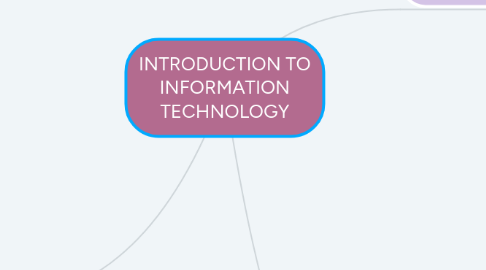
1. CATEGORIES OF COMPUTER
1.1. SUPERCOMPUTER
1.1.1. fastest, most powerful computer
1.1.2. capable to process more than one quadrillion instructions in a single second
1.1.3. full room of equipment
1.1.4. highest storage
1.1.5. usage: aerospace research, weather forecasting, nuclear energy research
1.2. MAINFRAME
1.2.1. large, expensive, powerful computer
1.2.2. can handle hundreds or thousands of connected user simultaneously
1.2.3. partial room to a full room of equipment
1.2.4. larger storage
1.2.5. usage: banking
1.3. PERSONAL COMPUTER
1.3.1. a computer that can perform all of its input, processing, output and storgeactivity by itself
1.3.2. fits on a desk
1.3.3. single processor
1.3.4. large storage
1.4. MOBILE COMPUTER
1.4.1. personal computer that fit on your lap and can carry from place to place
1.4.2. fits on your lap
1.5. MOBILE DEVICES
1.5.1. small enough to hold in your hand
1.5.2. fits in the palm
1.6. EMBEDDED COMPUTERS
1.6.1. special purpose computer that is function as a component in a larger product
1.6.2. miniature- mounted on a circuit board and then installed in a machine or appliance using wires to carry input and output signals
2. - the use of computer, hardware and software to store, retrieve and manipulate information
2.1. `ADVANTAGE
2.1.1. SPEED - data, instructions, and information flow incredibly fast speeds
2.1.2. RELIABILITY - the electronic components in computers are dependable and reliable because they rarely to break
2.1.3. COMMUNICATION - computers can communicate wirelessly with other computer and allow users to communicate with one another
2.2. DISADVANTAGE
2.2.1. PUBLIC SAFETY - we might be a victim to crime if we are exposing or sharing out photos, videos, or othe personal information
2.2.2. IMPACT ON LABOUR FORCE - many employee might jobless if their skills have been replaced by computers
2.2.3. HEALTH RISK - prolonged or improper computer use can lead to health injuries
3. APPLICATIONS OF INFORMATION TECHNOLOGY
3.1. EDUCATION
3.1.1. Learning Management System
3.1.2. E-Learning Web sites
3.2. FINANCE
3.2.1. Online Banking System
3.2.1.1. eg: maybank2u.com, CIMB Clicks
3.3. GOVERNMENT
3.3.1. e-Filing
3.3.1.1. online system for declaring tax
3.3.2. e-Penyata Gaji & Laporan
3.3.2.1. online system that allow users to view and print pay slip
3.4. HEALTH CARE
3.4.1. Health care websites
3.4.2. Telesurgery
3.4.2.1. health care professionals in seperate locations conduct live conferences on the computer to perform remote diagnosis of patients
3.5. SCIENCE
3.5.1. Virtual Reality
3.5.1.1. computer use to simulate a real or imagined environment that appears as 3 dimensional space
3.5.2. Cochlear implants
3.5.2.1. embedded computers imitate functions of cochlea of the ear and allow a deaf person to listen
3.6. PUBLISHING
3.6.1. Online Newspaper & Magazine
3.7. TRAVEL
3.7.1. Global Positioning System (GPS)
3.7.2. E-Ticketing System
3.8. MANUFACTURING
3.8.1. Computer Aided Manufacturing (CAM)
3.8.1.1. used to assist with manufacturing processes such as fabrication and assembly eg: build cars, ships
3.8.2. Computer Aided Design (CAD)
3.8.2.1. use of computer technology to automate design functions eg: CAQD software, such as AutoCAD help to design buildings, bridges

